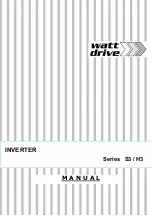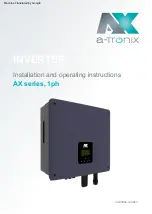
WAVECOM Decoders v6.15 W40PC, W41PC, W51PC
Transmission Modes
•
103
In the ITA-2 code a character is represented by five bits. For instance the letter "D" is
represented by the codeword '10110'. As we have five bits which can assume one of two
possible states we are able to represent 2
5
= 32 characters. However, the number of all letters,
figures, and special characters add up to more than 32. Therefore a trick is employed: ITA-2
makes distinction between two cases, lower (letters) case and upper (figures) case. Shifting
between these cases is accomplished by special shift characters. In this manner it is possible to
transfer (2 x 32) - 6 = 58 characters (the last six are subtracted because they have same
functions in either case).
Synchronization
To enable the receiving end of a data or telegraph link to interpret the received codewords in a
meaningful way, the receiver must first be
synchronized
to the incoming bitstream, and next
achieve codeword
phase
. Basically the receiver will search for a certain bit pattern in the
bitstream and when found transmitter and receiver are synchronized.
Before the widespread use of electronic circuits all telegraph devices were of electro-
mechanical nature and therefore prone to mechanical wear and tear. This in turn necessitated
comparatively large tolerances and made stable synchronization over even short periods
difficult. To overcome this serious problem, the ITA-2 alphabet adopted what is known as
start-stop
or
asynchronous
operation, which achieves synchronism for each codeword.
In start-stop systems a codeword is wrapped into an "envelope" consisting of a leading
start
bit
(logical '0') and one or more trailing
stop bits
(logical '1') - for ITA-2 the codewords are 1
+ 5 + 1.5 = 7.5 bits long. Bit synchronization is then achieved by detection of the start
element. The stop element(s) serve(s) the purpose of telling the receiver to reset its detection
mechanisms and wait for the next start bit. To ensure proper operation of the mechanical
devices the stop bit was extended to have 1.5 times the length of a data bit, which accounts for
the term "non-integral" earlier in this section.
In
synchronous
systems there is continuous synchronization between the sending and
receiving devices either by special non-printing control characters being inserted into the
messages at regular intervals or the codewords themselves being constructed to facilitate
synchronism. To maintain synchronism special idle or sync characters are transmitted when no
traffic is transmitted. In contrast to start-stop systems only elements having a duration of an
integral multiple of the duration of the minimum signal element are used –
isochronous
sequence.
For burst mode or packet like transmissions a leading preamble of either a sequence of
alternating zeros and ones and/or a repeated fixed pattern is often used for synchronization
purposes.
Telegraph Speed, Bitrate and Baudrate
The
bitrate
is the number of bits transmitted per second, measured in
bps
.
The
telegraph speed
or
baudrate
is the inverse of the duration of one channel signaling
unit and has the unit Baud (Bd). So if one channel signaling unit has a duration of 10 ms, then
the telegraph speed is equal to 1/0,01 = 100 Bd. If the channel has only two signaling levels,
e.g. 0V and +5V, bitrate is equal to baudrate, i.e. 100 bps. If four levels were used, the
baudrate would still be 100 Bd, but now the bitrate would be doubled to 200 bps, each baud
representing two bits.
By signaling levels is meant the different values a signaling unit may assume - for binary
signaling it is two levels, but many systems utilize more than two levels. For radio
transmission the levels may be represented by frequency, phase or amplitude levels.
Shift, Mark and Space
In principle to transmit telegraph information on a radio path you only need a transmitter
which is keyed on and off. However, due to the high level of disturbances frequency shift
keying (FSK) is used. In this mode the transmitter is continuously on, but transmits alternately
Содержание W40PC
Страница 1: ...WAVECOM Decoders v6 15 W40PC W41PC W51PC by WAVECOM Elektronik AG...
Страница 56: ...48 General Operating Procedure WAVECOM Decoders v6 15 W40PC W41PC W51PC...
Страница 238: ......
Страница 242: ......
Страница 246: ......
Страница 252: ...244 Manual History WAVECOM Decoders v6 15 W40PC W41PC W51PC W40PC New modes AMSAT P3D AUM 13 CIS 36 50 CIS50 50 MFSK 20...















































